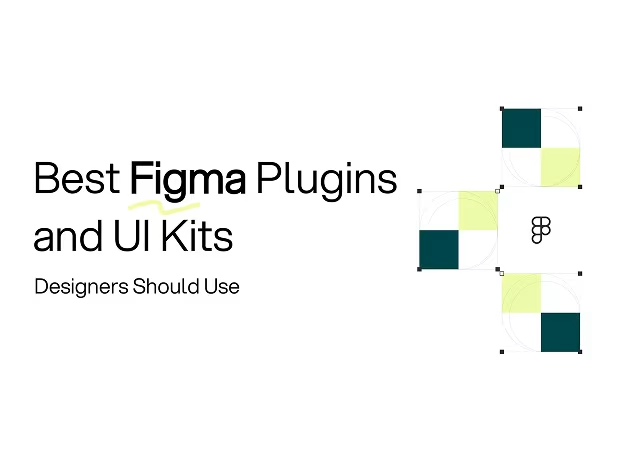Table of Contents

Designing a successful SaaS product is more than just creating a visually appealing interface it’s about crafting an experience that keeps users engaged, satisfied, and coming back. SaaS design is the art and science of building software-as-a-service products that are intuitive, efficient, and user-friendly. For startups, investing in user-centric design isn’t optional; it’s essential for driving adoption, retention, and long-term growth.
A well-designed SaaS product balances aesthetics, usability, and workflow efficiency, ensuring users can navigate complex features without friction. From smooth onboarding flows to clear information hierarchy, each design decision influences how users perceive and interact with your product. In today’s competitive market, a seamless and engaging UX/UI doesn’t just delight users it builds trust, credibility, and lasting engagement.

What is SaaS Design?
SaaS design goes far beyond simply creating a polished interface it’s about designing an entire user experience tailored to software-as-a-service products. At its core, SaaS design combines functionality, usability, and aesthetics to help users achieve their goals efficiently and enjoyably.
A strong SaaS design carefully considers the organization of content and features, ensuring users can easily find what they need. It focuses on smooth onboarding flows that guide new users through the product, reducing confusion and boosting adoption. Dashboards and analytics are designed to present complex data in a clear and actionable way, while mobile responsiveness ensures the experience remains consistent across all devices. Interactive elements, such as subtle animations and microinteractions, make the interface intuitive and engaging.
In essence, a well-executed SaaS design balances visual appeal with functional clarity, creating an experience that not only looks impressive but also works seamlessly. Every interaction is designed to be smooth and intuitive, fostering trust, satisfaction, and long-term engagement with the product.
Why SaaS Design Matters for Startups
Startups operate in a fast-paced environment where resources are limited and every decision counts. Gaining market traction quickly is critical, and often, the first impression a product makes can determine its success or failure. In this context, SaaS design is far from optional—it’s a strategic necessity.
A poorly designed interface or confusing user flow can frustrate users, leading to high churn, low adoption, and lost revenue. Even the most innovative features can fall flat if users struggle to navigate the product. Conversely, a well-crafted SaaS design helps startups stand out in competitive markets, build trust with users, and encourage long-term engagement.
Investing in professional design ensures that every interaction feels intuitive, onboarding is seamless, and the product communicates value immediately. For startups aiming to grow rapidly and retain customers, strong UX/UI design is not a luxury—it’s a foundation for success.
The Necessity of Professional SaaS Design in 2025
The SaaS market in 2025 is more competitive than ever. Users expect intuitive, seamless interfaces that make complex workflows simple, and even small friction points can lead to disengagement. At the same time, AI-powered solutions are transforming the way users interact with software, making smart, adaptive interfaces the new standard. In this environment, professional SaaS design is no longer optional startups that ignore design risk falling behind before they’ve even gained traction.
At Orbix Studio, we recently work with a client, a FinTech startup aiming to simplify financial reporting for small businesses. Their original platform was functional but lacked clarity in dashboards and onboarding flows, which was affecting adoption. Our team redesigned the interface, focusing on clear data visualization, intuitive navigation, and AI-driven insights. Post-launch, FinTrack saw a 45% increase in user engagement and a 30% reduction in onboarding drop-offs, proving how strategic SaaS design directly impacts growth.
For startups in 2025, professional design is not just about aesthetics—it’s a critical driver of adoption, retention, and scalability. Investing in expert UX/UI ensures that products are not only visually appealing but also strategically aligned with user needs and market demands.
Top 10 Figma-first UI/UX agencies that design SaaS products
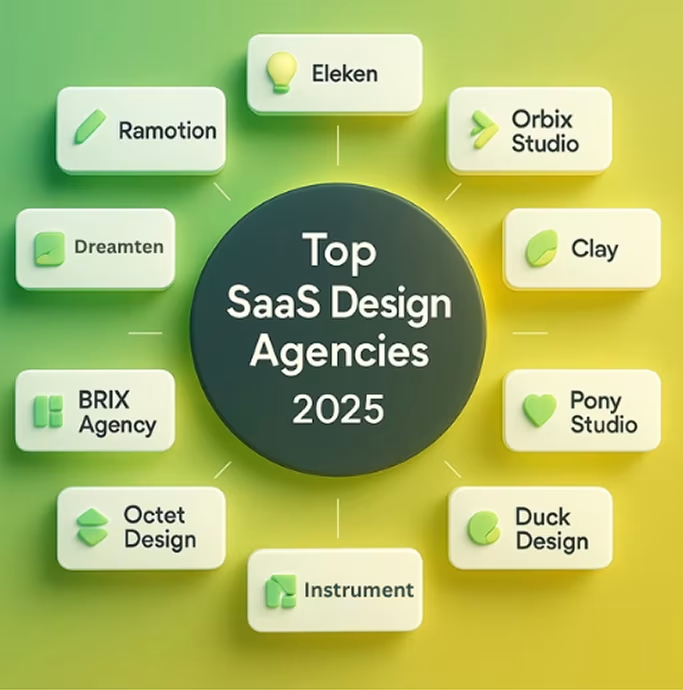
1. Orbix Studio
Orbix Studio was founded to partner with fast-moving startups that don’t just need a product they need a product that scales. Positioned as a design partner for early and growth-stage companies, Orbix focuses on startups building SaaS, web apps, and mobile platforms. Their mission simplify complexity through design, accelerate validation, and build systems that carry a product beyond launch. Their website emphasizes global reach and client success across US and Europe.
Core Strengths
Orbix Studio combines UI/UX design, product strategy, and modular design systems to build SaaS dashboards, web apps, and digital products that balance usability with scalability. The team prioritizes fast validation, developer-friendly handoffs, and structured workflows, ensuring smooth collaboration with engineering teams. With experience across SaaS platforms, onboarding flows, and mobile interfaces, Orbix delivers consistent design systems that evolve with each product stage. Having completed over 85 global design projects, their flexible monthly model makes them a practical choice for startups moving fast without sacrificing quality. Operating across multiple time zones, they maintain steady communication and delivery rhythm to ensure measurable results.
What Sets Them Apart
In the crowded field of SaaS design agencies, Orbix Studio differentiates by combining startup sensibility (fast, lean, iterative) with a full-scale product mindset (scalable, modular, system-oriented). For a startup needing both design agility and product robustness, they offer a credible balance.
2. Ramotion

Ramotion sees SaaS design as the intersection of product usability and brand trust. They combine visual storytelling with interface precision to create experiences that feel modern, consistent, and scalable. Their work focuses on giving SaaS products a strong design foundation that supports both brand identity and user efficiency.
Headquartered in San Francisco, USA, Ramotion provides UI/UX design, branding, product strategy, and front-end development services. Their clients range from funded startups to global companies looking for a design partner capable of balancing creative vision with product performance.
3. Eleken

Eleken believes SaaS design should simplify, not overwhelm. Their approach focuses on reducing product friction through research-led UX and data-informed design systems. They embed designers directly into client teams to help startups refine, iterate, and scale faster.
Based in Kyiv, Ukraine, Eleken offers UI/UX design, SaaS product design, design systems, and ongoing design subscription services. Their team works with early and growth-stage SaaS companies across North America and Europe, helping B2B startups turn complexity into clarity through functional, conversion-focused design.
4. Clay

Clay approaches SaaS design through the lens of strategy and identity. They believe great digital products grow faster when brand and UX are unified. Their team merges user research with design system thinking to help SaaS companies build cohesive, scalable interfaces across web and product touchpoints.
Operating from San Francisco, Clay offers product design, UX research, UI systems, and brand development for growth-stage startups. Their client roster includes tech innovators that need future-proof design solutions adaptable to both marketing and in-app experiences.
5. Deamten
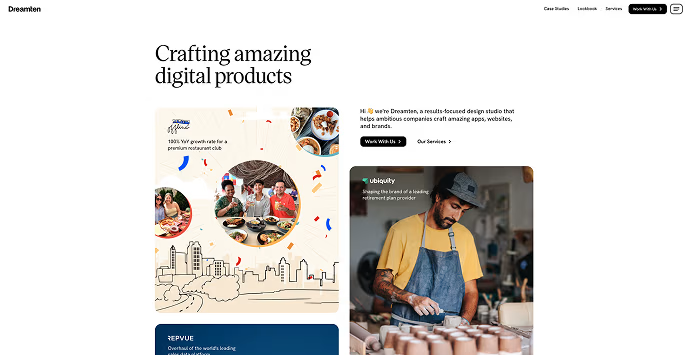
Dreamten views SaaS design as craftsmanship with measurable outcomes. They focus on clear visual hierarchy, intuitive interactions, and scalable design systems that help products evolve over time. Their design philosophy centers on clarity and user trust, ensuring that every screen contributes to product performance.
Located in North Carolina, USA, Dreamten provides UI/UX design, product prototyping, design systems, and Webflow development. They partner with startups seeking polished, production-ready design frameworks that accelerate development and enhance user retention.
6. BRIX Agency
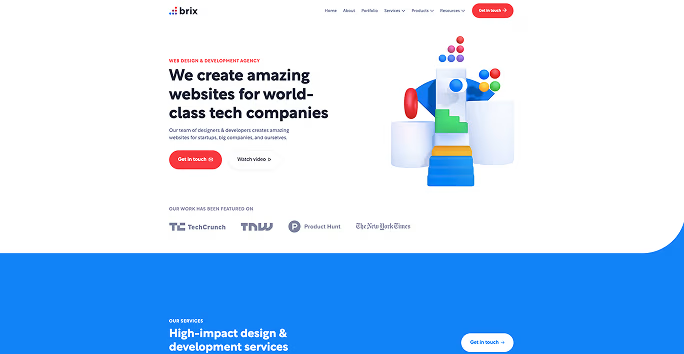
BRIX Agency approaches SaaS design as a blend of conversion strategy and usability. They focus on aligning marketing websites with in-product interfaces, ensuring a consistent experience from acquisition to onboarding. Their data-driven design decisions aim to increase signups and user engagement through visual simplicity and functional design.
Based in London, UK, BRIX offers SaaS UI/UX design, website design, Webflow development, and conversion optimization services. Their work primarily supports SaaS startups looking to unify brand storytelling with effective product design for higher retention and growth.
7. Octet Design Studio

Octet Design Studio believes SaaS design should balance research depth with execution speed. Their process emphasizes understanding user journeys, simplifying product flows, and building flexible design systems that scale with growing product needs.
Headquartered in Pune, India, Octet provides UX research, UI design, SaaS dashboard design, and usability testing. They’ve worked with enterprise clients and startups alike, focusing on industries such as fintech, logistics, and B2B SaaS, where complexity and scalability go hand in hand.
8. Pony Studio
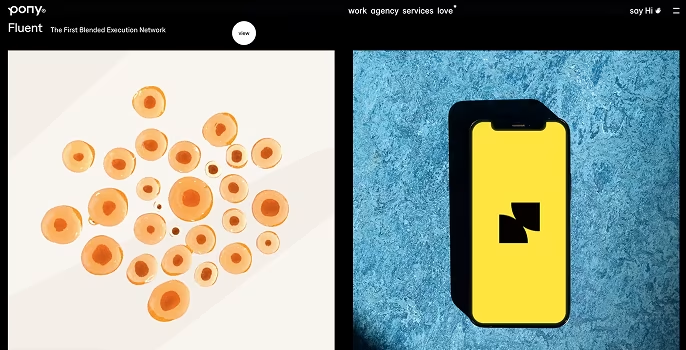
Pony Studio sees SaaS design as both art and strategy. They emphasize visual storytelling and clear user flows to make complex data platforms approachable. Their style is bold yet structured, helping SaaS and fintech startups turn dense information into intuitive experiences.
Based in London, UK, Pony Studio specializes in UX/UI design, brand identity, web design, and motion graphics. Their client base includes fintech and data-focused startups looking to differentiate through strong visual identity and conversion-led UX.
9. Duck Design

Duck.Design approaches SaaS design with flexibility and speed in mind. They believe startups need continuous design support that can evolve as their product does. Their subscription-based model provides on-demand access to skilled designers who can rapidly iterate across product and marketing assets.
With a distributed global team, Duck.Design delivers UI/UX design, SaaS product design, branding, and illustration services. Their scalable workflow suits fast-growing startups that require consistent design capacity for ongoing product improvements.
10. Instrument

Instrument treats SaaS design as a strategic tool for business growth. Their multidisciplinary team connects product experience, brand storytelling, and conversion strategy to help companies activate user engagement at every touchpoint.
Headquartered in Portland, Oregon, Instrument offers UI/UX design, branding, product strategy, and experience design. They work with startups and enterprises that need both creative precision and strategic execution to scale their digital presence and user experience.
Strategic SaaS Design Accelerates Product Growth
In today’s SaaS landscape, product growth isn’t just determined by features it’s driven by how users experience those features. A strategic approach to SaaS design focuses on improving key user touchpoints such as onboarding, dashboards, and data visualization. When these elements are thoughtfully crafted, they lead to measurable gains in activation, retention, and customer satisfaction.
At Orbix Studio, our experience designing platforms across various SaaS niches ranging from project management tools to AI-powered analytics dashboards and finance automation products—has consistently shown one truth: clarity drives conversion. Products that simplify complex data through intuitive dashboards, reduce cognitive load during onboarding, and guide users with clear visual hierarchies tend to retain customers significantly longer.
Strong SaaS UX helps users find value faster. When the interface supports effortless navigation, communicates feedback effectively, and eliminates friction, it creates a natural sense of progress and control. This directly impacts metrics that matter most to startups higher activation rates, reduced churn, and better engagement across subscription cycles.
In essence, strategic SaaS design isn’t just about creating beautiful products; it’s about aligning design decisions with business outcomes. By focusing on usability, clarity, and emotional connection, startups can transform design into a growth engine something Orbix Studio continues to achieve through every SaaS product we help bring to life.
How to Choose the Right SaaS Design Agency for Your Startup
For startup founders, choosing a design agency isn’t just about finding someone who can make your product look good—it’s about finding a strategic partner who understands how design drives growth. The right SaaS design agency will dig deeper than surface-level visuals; they’ll understand your product’s purpose, your users’ motivations, and your long-term vision.
When evaluating potential agencies, start by studying their portfolios. Look for work that demonstrates clarity, usability, and problem-solving rather than just aesthetics. A good SaaS design agency should have experience designing onboarding flows, dashboards, and data-driven interfaces, not just marketing websites. Their portfolio should reflect a genuine understanding of SaaS user journeys—from sign-up to retention.
Equally important is process transparency. The best agencies communicate their design process clearly, showing how they move from research and wireframes to prototypes and testing. They should collaborate with you, not just deliver assets. At Orbix Studio, for instance, we involve clients at every stage from initial UX mapping to final UI refinements ensuring the final product feels aligned with both user needs and business goals.
Finally, look for an agency that views design as a growth function, not a finishing touch. The right partner will ask the right questions about your product metrics, user behavior, and desired outcomes—helping you turn design decisions into business impact. Choosing strategically ensures you’re not just building a good-looking product—you’re building one that grows sustainably.
Conclusion
In the world of SaaS, great design isn’t decoration it’s the engine that powers growth. From the first onboarding interaction to the daily workflows users rely on, design determines how effectively your product delivers value. A seamless, intuitive interface doesn’t just make software easier to use; it builds trust, loyalty, and long-term engagement.
Startups that invest in professional design early often scale faster and retain customers longer. That’s because a well-crafted UX turns complexity into clarity, guiding users effortlessly toward success. As competition intensifies in 2025, the startups that will stand out aren’t just those with the most innovative featuresbut those that make those features feel effortless to use.
FAQs
What makes a SaaS design agency different from a regular UI/UX agency?
A SaaS design agency specializes in designing products built on a subscription or platform model. Unlike general UI/UX agencies, SaaS-focused teams understand user retention, onboarding flows, and dashboard usability key elements that keep customers engaged and reduce churn.
Why should startups invest in professional SaaS design early?
Early-stage startups benefit from investing in design because great UX drives faster adoption, stronger retention, and clearer product-market fit. A professionally designed SaaS product ensures users immediately understand value, leading to better conversion and long-term engagement.
How do SaaS design agencies help improve product growth?
SaaS design agencies combine UX research, data-driven design systems, and conversion optimization to refine user journeys. They focus on improving activation, engagement, and retention turning every design decision into measurable business impact.
What should I look for when choosing a SaaS design partner?
Look for agencies with proven SaaS experience, transparent processes, and a portfolio showing clarity and scalability. The best partners collaborate closely, iterate quickly, and align their design approach with your startup’s growth metrics and user goals.
How is SaaS design evolving in 2025?
In 2025, SaaS design is shaped by AI-assisted personalization, adaptive dashboards, and simplified multi-device experiences. Users expect faster, smarter, and more intuitive interfaces making UX/UI a central factor in driving SaaS adoption and customer loyalty.
Fresh UI/UX Ideas, Straight to Your Inbox



